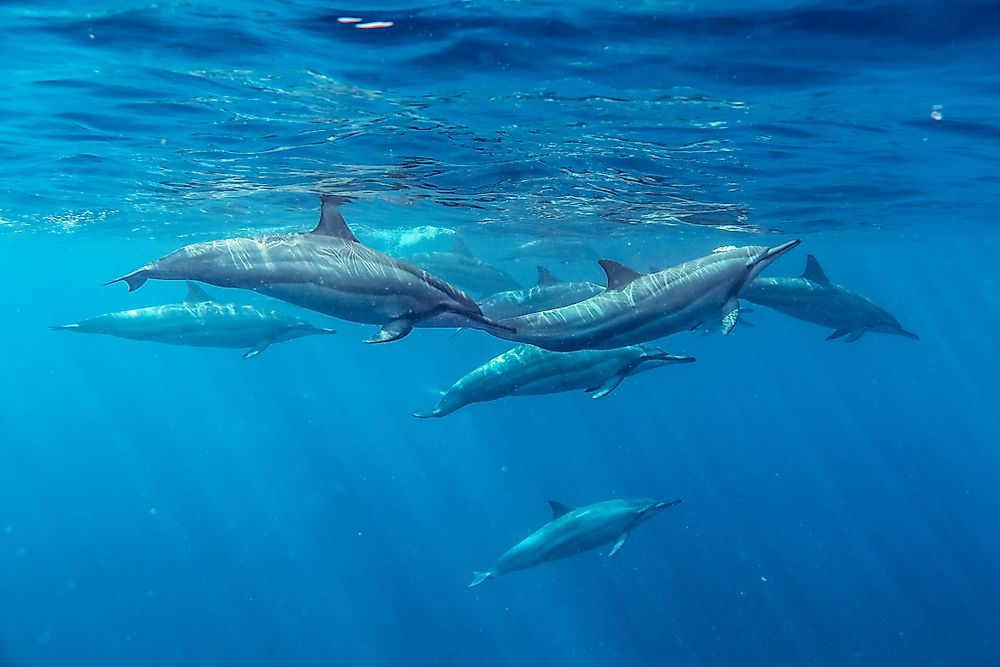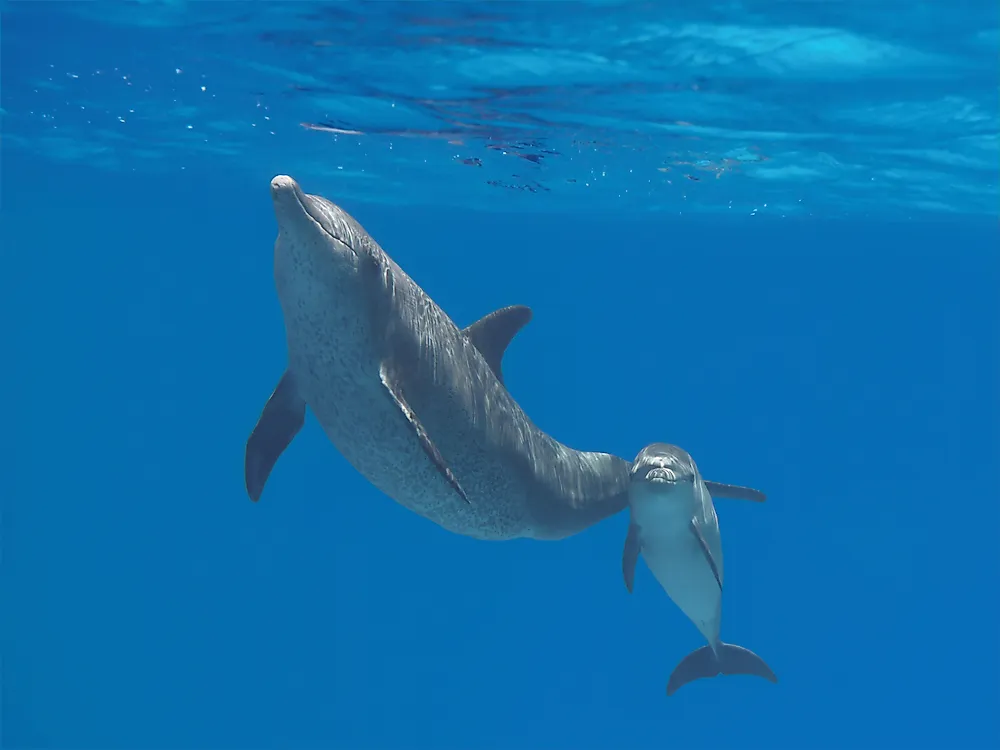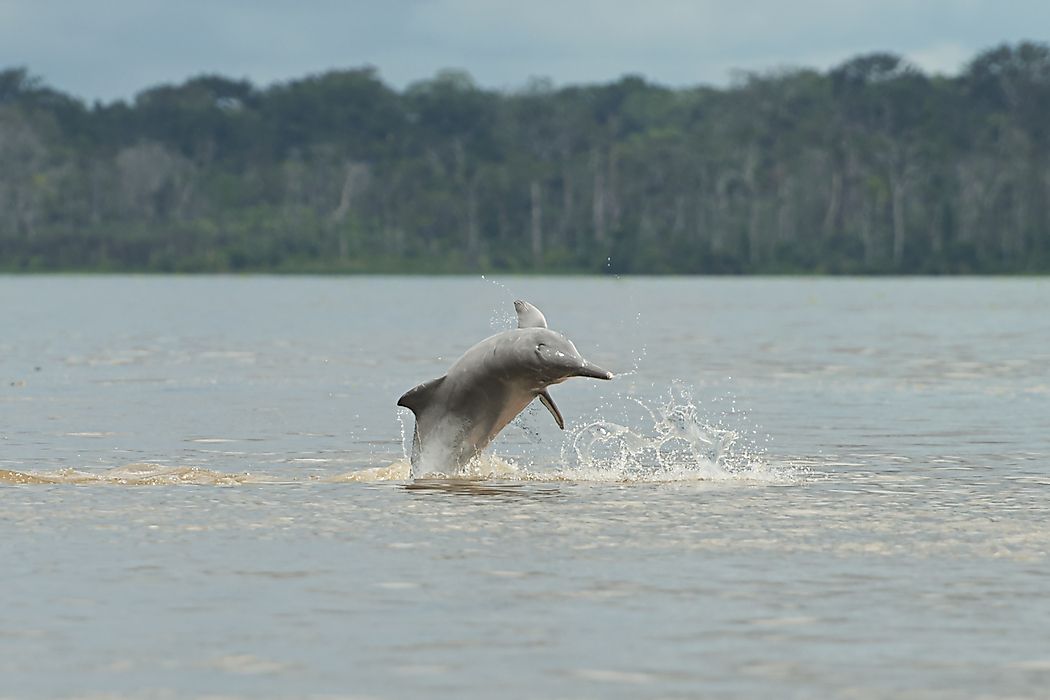How Many Different Types of Dolphins Are There?

Dolphins are an informal group within the Cetacea order which excludes porpoises and whales. They are diverse and widely distributed aquatic mammals that are made up of four extant families including Pontoporiidae, Iniidae, Platanistidae, and Delphinidae. There are about forty extant dolphin species. Dolphins, together with other cetaceans, are members of the group Cetartiodactyla. Due to their super hearing abilities, which functions both in water and air, these mammals can survive even when blind.
4. Delphinidae (Oceanic Dolphins)

Oceanic dolphins are a widely distributed dolphin family which resides in the sea. Together with Monodontidae (narwhal and beluga whale) and Porpoises (phocoenidae), oceanic dolphins belong to the Delphinoidea superfamily. There are approximately 30 extant species of oceanic dolphins, including several species that are often mistaken for whales. Oceanic dolphins vary in size from 110 pounds and 5.6 feet long (Maui’s dolphin) to 10 tons and 31 feet (orca). The male oceanic dolphins are bigger than the females. These mammals have streamlined bodies with two flippers. Although they are not flexible like seals, most dolphins can swim at a maximum speed of about 34.5 mph. Oceanic dolphins travel in large pods with some species having over 1,000 members. Some pods are permanent while others have a loose social structure with members leaving or new members joining. They communicate using high-frequency clicks of over 220 kHz and low-frequency whistles which they use for echolocation. Most oceanic dolphin species reside in the warm waters of the tropical regions while others live in colder climates. Other dolphins, like the right whale dolphin, are distributed globally. Most oceanic dolphins are pure carnivores that feed on fish, small crustaceans, and numerous squids while others only eat squids. The most common feeding method of the oceanic dolphins is herding whereby a huge pod herd fish into a ball and take turns plowing through the ball of fish. Others feed through a method known corralling whereby they chase fish to the shallow part of the sea where they can catch them quickly. Bottlenose dolphins tend to drive their prey to the beach and feed on them, a practice known as strand feeding. Some Delphinidae strike fish with their flukes.
3. Platanistidae (Indian River Dolphins)
Platanistidae is a river dolphin family featuring one extant species, the South Asian river dolphin. The South Asian river dolphins are endangered freshwater species that reside in parts of South Asia. The South Asian river dolphin is split into two subspecies, the Ganges River and Indus River dolphins. The Ganges River dolphin inhabits the Brahmaputra River and Ganges River in Bangladesh and India while the Indus River dolphin lives in the Indus River’s main channels in Pakistan. They have long pointed noses just like all the other river dolphins. Their teeth are visible even if their mouth is closed. The teeth of their young ones are usually curved, thin, and an inch long, while the teeth of the adults are flat, square, and are bony disks. They have a brownish body which is stocky at the center. The tails and flippers of the South Asia river dolphins are large and thin in comparison to their body size. The male is about 7.2 feet long while the female is approximately 8.5 feet. Some river dolphins, like the South Asian river dolphin, have poor eye-sight; therefore they depend on echolocation to locate their prey. These dolphins have a well-developed hearing which functions perfectly both in water and air. Their rostrums help them detect hard to find or hidden preys. They usually hold their prey in their jaws and swallow them. They use their teeth as clamps instead of chewing. These dolphins feed on catfish or carp and shrimp. Some species feed on turtles and birds.
2. Iniidae (New World River Dolphins)

Iniidae, also referred to as boto or Amazon River dolphin, thrive in the freshwater habitats of the Orinoco Basin and Amazon River. Iniidae has four extinct genera. The Amazon River dolphin is common in South America and the only existing genus of Iniidae. These dolphins weigh about 408 pounds and are approximately 8.2 feet long. The males weigh about 55% more and measure approximately 16% longer than the female Amazon River dolphins. The male Iniidae have a stronger shade of pink than the females, while the juvenile is grey. The dorsal part of all adults is darker than the ventral region, and the difference in color depends on transparency, water, temperature, and geographical location. These dolphins feed on prey which have an average length of about 7.9 inches. They feed on different fish species belonging to the family Characidae, Cichlidae, and Sciaenidae. Their dentitions allow them to access the shells of freshwater crabs and turtles. Their diet is way more diverse in the wet season when the rivers have flooded and catching prey is difficult. These dolphins feed during the night and day when they are active. Iniidaes consume about 5.5% of their body weight daily.
1. Pontoporiidae (Brackish Dolphins)
The only existing member of the Pontoporiidae family is the La Plata dolphin. La Plata dolphin was first described by Alcide d’Orbigny and Paul Gervais in 1844. La Plata dolphins reside in the coastal Atlantic Ocean of South America. Pontoporiidae is the only member of river dolphin that lives in saltwater estuaries and oceans. Their distribution ranges from Peninsula Valdes in Argentina to the Tropic of Capricorn in Brazil. They have been seen swimming in small groups in Bahia Negro Province, Buenos Aires Province, and Miramar. These dolphins have the longest beaks of all the cetaceans with the females attaining a maximum length of about 5.9 feet while the males are 5.2 feet long. They have a greyish brown body. La Plata dolphins have broad flippers which are triangular. Their dorsal fins have a round tip and long base. They have between 48 to 61 conical shaped teeth on both the lower and upper jaws. These dolphins can live for about 20 years and have a maximum weight of about 110 pounds. Pontoporiidae is inconspicuous and can only be seen when the estuary conditions are calm. They love swimming alone and can be seen sometimes in a group of 15 dolphins. These mammals are bottom feeders and feed on over 24 fish species. They can also consume shrimps, squid, and octopus.











